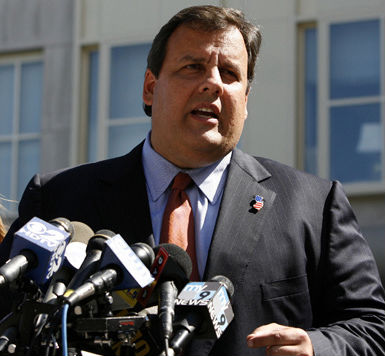
Reporter Ed Mendel covered the Capitol in Sacramento for nearly three decades, most recently for the San Diego Union-Tribune. More stories are at Calpensions.com.
A bill sent to California Gov. Jerry Brown this month would exempt new hires from his reform requiring them to pay half the normal cost of their pensions, if they work for any of the 22 cities and one county that have special property taxes to pay pensions.
The pursuit of an unlikely exemption may be an early sign of the resistance facing government employers that try to impose the 50 percent normal cost share on current workers, as allowed by the reform through the bargaining process beginning in 2018.
One of the backers of the bill that would exempt new hires of pension-tax cities, the Peace Officers Research Association of California, mentions the potential change for current workers in a statement supporting SB 292.
“A section in the PEPRA (Public Employees Pension Reform Act) calls for all new employees, and by 2018 most current employees, to contribute 50 percent of their ‘normal cost,’” said the association’s statement.
The normal cost covers the estimate of the pension earned in a year. But it does not cover the debt or “unfunded liability” from previous years such as investment earnings shortfalls, longer life spans, and workforce changes.

So, it’s the government employer and taxpayers, not the employee, who bear nearly all of the pension risk and often most of the pension cost.
A police or firefighter, for example, might be contributing 10 to 12 percent of pay to their pension, roughly half the normal cost, while the employer contributes several times as much, reaching 60 percent of pay or more in some deeply under-funded plans.
The pension reform Brown pushed through the Legislature three years ago (UC and independent big-city pensions are excluded) requires new hires to contribute 50 percent of the normal cost, if they are not under a contract specifying a contribution rate.
To allow time for labor contracts to expire, the reform set a date of 2018 to begin allowing employers, when good faith bargaining fails, to impose a 50 percent normal cost contribution on workers hired before the reform took effect.
The reform (AB 340 in 2012) also put a cap on the contribution that can be imposed: 8 percent of pay for most workers, 12 percent of pay for police and firefighters, and 11 percent of pay for other safety workers.
There is no cap on contributions agreed to through bargaining. The reform said equal cost sharing of the total normal cost “shall be the standard.” But it does not appear to be required for workers hired before the legislation took effect.
For new hires, the reform bans payment of the employee contribution by the employer, known as the “pension pickup” or more formally the “employer paid member contribution.”
The pension pickup, often obtained through bargaining, has been widespread. It counts as pay on which pensions are based, has some tax advantages, and the employer is sometimes reimbursed by employees.
The bill labor groups sent to Brown this month would allow the pension pickup to continue in cities and counties where voters approved a property tax to help pay pension costs, prior to the passage of the landmark Proposition 13 property-tax cut in 1978.

In legislative analyses of the bill, the statements from the co-sponsors, the Peace Officers Research Association of California and the California Professional Firefighters, have two main points.
1) If the pension tax can no longer be used to pay the employer and employee pension contribution, money from the general fund and other sources will have to make the pension payments, straining budgets.
2) Banning the use of the tax to pay employee pension contributions conflicts with the will of the voters, some expressed in long-standing local measures approved in the 1920s.
Last week, the sponsors of the measure could not provide examples of pension property taxes, said to be capped in a range from 0.05 to 0.45 percent, that specifically direct the revenue to employee contributions rather than pension costs in general.
The only specific example of a pension tax in the legislative analyses of the bill is a statement from the city of Oxnard opposing the bill. Its pension tax falls short of covering safety pension costs, requiring “several million dollars” from the general fund.
“Thus, if these new employees are exempted from the 50 percent employee contribution requirement of PEPRA, the costs for the pension contribution no longer required by the employee would place an additional burden upon the city’s general fund,” Oxnard said.
The pension-tax exemption bill, SB 292, made the selective hit list of a Los Angeles Times editorial vigorously titled “Gov. Brown, veto these 5 bills!” and published yesterday (Sept. 27).
“Proponents of the bill, which was sponsored by lobbyists for police and firefighters, argue that cities with this sort of levy should be exempt because their voters wanted to pay for pensions through special taxes,” said the Times.
“But it’s far from clear that these voters, some casting ballots as far back as the 1930s, intended to cover the employees’ share of the cost of future pension plans with different benefits.
“In any case, we believe it would be unfair to the state’s other local agencies to exempt a few cities from this important reform simply because of how they’ve paid for previous pension plans.”
Last year, a bill was introduced, AB 837, that would have exempted seven judges from PEPRA, lowering their pension contribution from the 15 percent of pay for new hires to the 8 percent of pay for judges in office before the reform took effect.
The seven judges thought they had a strong argument for fairness. They were elected in 2012 after holding jobs in the private sector, but did not take office until after the reform took effect on Jan. 1, 2013.
Other judges elected in 2012, who also did not take office until 2013, already were in a public pension system because they had been in government jobs. They paid the same lower contribution as judges in office before the reform took effect.
Three of the seven judges from the private sector appeared before a legislative committee to argue the case for fairness. On their recent salary of $181,292, lowering their pension contribution from 15 to 8 percent of pay would save each judge $12,690 a year.
The judges bill passed the Legislature on a strong bipartisan vote, Senate 31-to-2 and Assembly 69-to-6. The pension-tax bill passed the Democratic-controlled Legislature on a more partisan vote, Senate 27-to12 and Assembly 48-to-25.
“This measure creates an exemption to the California Public Employees’ Pension Reform Act of 2013,” Brown said in his judges bill veto message. “I am unwilling to begin chipping away at these reforms.”











